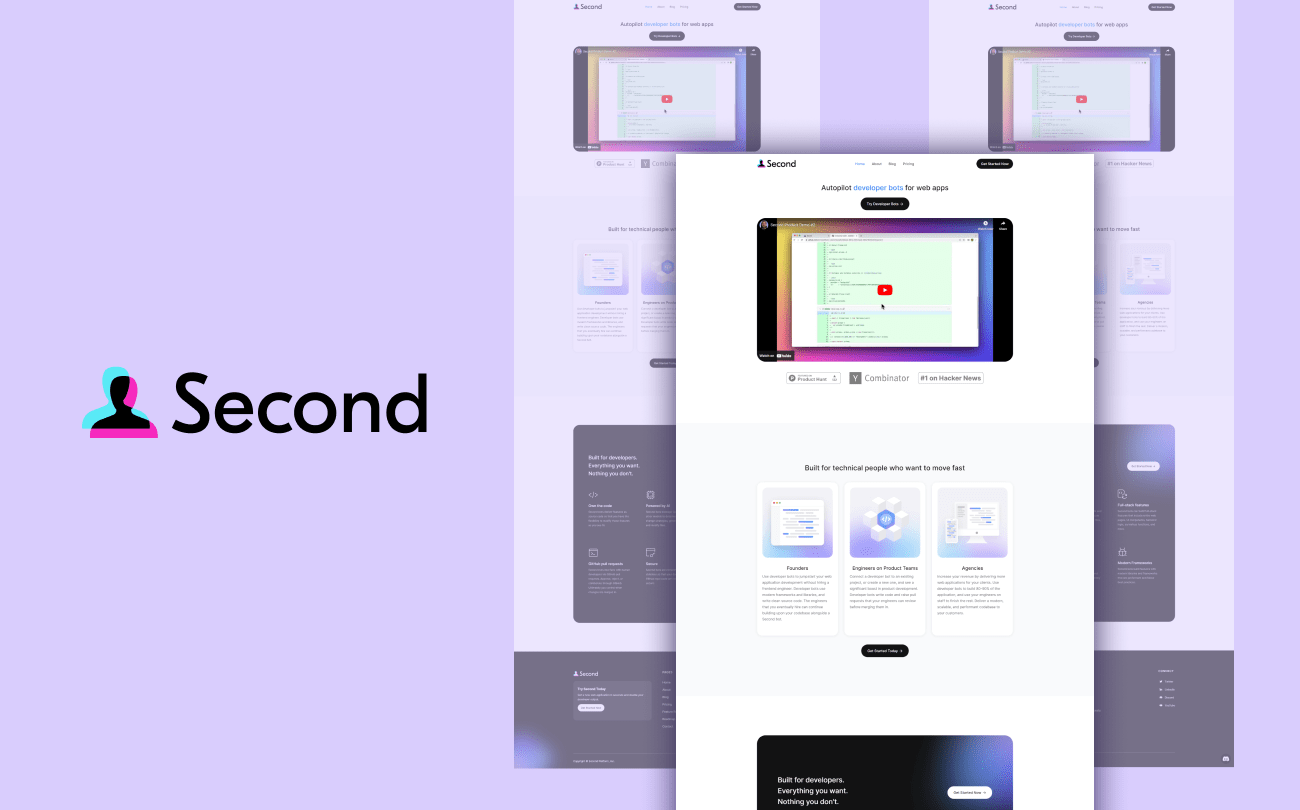Introduction:
In the ever-evolving landscape of work, where efficiency and organization are paramount, Second Home emerges as a powerful productivity AI tool. Leveraging advanced technologies such as Natural Language Processing (NLP), Machine Learning (ML), and automation, Second Home is designed to streamline workflows, reduce time and effort, and enhance overall productivity for individuals and teams. In this comprehensive exploration, we delve into Second Home’s features, pros and cons, pricing models, and its potential impact on optimizing workdays.
What Is Second Home?
Second Home stands as a cutting-edge productivity AI tool that integrates NLP, ML, and automation to revolutionize the way individuals and teams manage their work. This tool is not just about task management; it’s a comprehensive solution aimed at providing a centralized hub for all work-related activities. By seamlessly integrating with various tools and platforms, Second Home aims to reduce the need for users to switch between different applications, fostering a more streamlined and efficient work environment.
Key Features of Second Home:
Integration with Other Tools:
Second Home stands out for its ability to integrate with email, calendars, project management software, and more. This integration creates a centralized management system, minimizing the need to navigate between different apps and programs.
Task Lists and Reminders:
Second Home offers traditional yet essential features like task lists and reminders. Users can organize their tasks and set reminders to ensure nothing falls through the cracks, contributing to improved task management.
Personalized Recommendations:
The tool’s advanced capabilities include the analysis of user behavior to provide personalized recommendations. This feature aims to optimize workflows by offering tailored suggestions, helping users work more intelligently.
Task Prioritization:
Second Home assists users in prioritizing tasks effectively. With features dedicated to task prioritization, users can focus on the most critical aspects of their work, potentially reducing stress and enhancing productivity.
Automation Capabilities:
Automation is a key strength of Second Home. By automating repetitive and time-consuming tasks, the tool aims to free up valuable time for users to focus on higher-level, strategic work.
Pros of Second Home:
Improved Efficiency:
Second Home’s integration of advanced technologies allows it to streamline workflows, potentially reducing the time and effort required to complete tasks. This can result in enhanced overall efficiency for individuals and teams.
Centralized Management:
The tool’s ability to integrate with various tools and platforms provides users with a centralized location for managing all work-related tasks. This minimizes the need for constant switching between different applications, promoting a more cohesive work environment.
Personalized Recommendations for Optimization:
Second Home’s capacity to analyze user behavior and offer personalized recommendations contributes to optimized workflows. This feature assists users in making data-driven decisions to improve efficiency.
Task Prioritization and Stress Reduction:
With features like task prioritization, Second Home helps users focus on the most crucial aspects of their work. This not only enhances productivity but can also contribute to stress reduction by offering a clear and organized approach to task management.
Automation for Time Savings:
Automation capabilities allow Second Home to handle repetitive and time-consuming tasks, freeing up valuable time for users. This can lead to increased productivity by allowing users to allocate their time to more impactful work.
Cons of Second Home:
Learning Curve:
Introducing any new tool, especially one with advanced features, may come with a learning curve. Users might need some time and effort to become proficient in utilizing all of Second Home’s functionalities.
Dependence on Technology:
Second Home’s effectiveness is contingent on technology. Technical issues or outages could potentially disrupt workflows, affecting users’ ability to access and utilize the tool.
Privacy Concerns:
Sharing sensitive information, such as emails and calendars, with a third-party tool like Second Home may raise privacy concerns for some users. Ensuring data security and privacy is crucial.
Cost:
While a free plan may offer basic features, more advanced capabilities and additional integrations may be available through paid plans. Cost considerations could be a potential drawback for users on a tight budget.
Limited Customization:
Despite offering various features, Second Home may not provide the level of customization some users require for their specific workflows and tasks. Limited customization options may pose challenges for users with unique needs.
What Is the Pricing of a Second Home?
Second Home offers a range of pricing plans to cater to different user needs. Typically, a free plan may provide basic features such as task lists and reminders, with potential limitations. Paid plans may offer additional features, advanced automation capabilities, and increased integrations with other tools and platforms.
Pricing models can vary based on factors such as the level of features offered, the extent of customer support, and the number of users or team members. To obtain the most accurate and up-to-date information on pricing and plans, users are advised to visit the Second Home website or directly contact their support team.
Conclusion:
In conclusion, Second Home emerges as a significant player in the realm of productivity AI tools, aiming to redefine how individuals and teams manage their work. Its incorporation of NLP, ML, and automation sets it apart as a comprehensive solution, offering features like integration with various tools, task lists, reminders, personalized recommendations, and automation capabilities.
While potential drawbacks include a learning curve, dependence on technology, privacy concerns, cost considerations, and limited customization, the benefits of improved efficiency, centralized management, personalized recommendations, task prioritization, and automation could outweigh these concerns.
Second Home presents an opportunity for users to stay focused, organized, and productive, ultimately contributing to a more fulfilling and efficient work experience. As the tool evolves and addresses user feedback, it has the potential to play a pivotal role in shaping the future of AI-powered productivity tools.












What do you think?
Show comments / Leave a comment